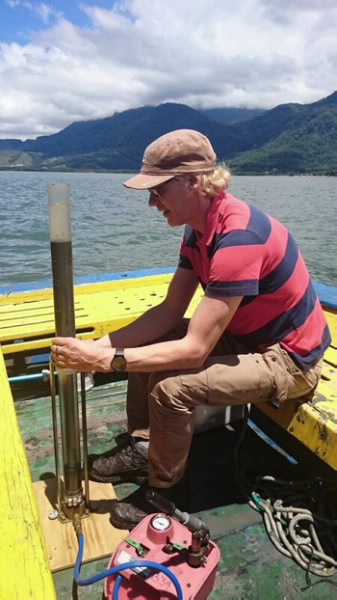Australia is participating in an international research project that will use isotopic and nuclear techniques to study coastal pollution at a number of global sites in developing and developed countries.
The research, which is being undertaken under the auspices of the International Atomic Energy Agency (IAEA) as a Coordinated Research Project, is expected to produce a series of pilot studies; a streamlined, harmonised and validated methodology for sediment dating and reliable, high quality and comparable data on temporal trends of pollutants from coastal areas in different geographical locations.
The investigations will reconstruct past status of the marine environment and identify the sources of pollution and identify trends.
Prof Henk Heijnis, Leader of Environmental Science at ANSTO and Chair of the project and will lead a small team of environmental researchers who will undertake pollution studies at sites in Australia and Indonesia.
Of 29 countries that applied to participate, 10 were selected for inclusion in the four year project: Australia, Brazil, Kenya, Kuwait, Malaysia, Mexico, Morocco, Sri Lanka, Sweden and Vietnam.
“The Australian component includes areas where coastal marine environments have been effected by specific issues, such as point source and diffuse contaminants,” said Heijnis.

“Because today a great deal more goes into Botany Bay (pictured above) than Sydney Harbour from industrial activities along two major rivers that empty into it, we have selected this marine environment.”
ANSTO researchers will retrieve sediment cores from the middle of the bay.
“The Moreton Bay site in Queensland is somewhat different in that it is affected by significant runoff from the catchment area and sediment loading, particular in times of catastrophic floods,” said Heijnis.
A prospective Great Barrier Reef study in partnership with the CSIRO would also focus on the issue of the impact of coastal runoff.
Australia in collaboration with Indonesian counterparts, would also undertake sampling and analysis at sites in Indonesia and Sumatra.
“In association with Dr Ali Arman from our sister organisation BATAN, we want to establish the pollution trends for Jakarta Bay, where the catchment area went from having a population of 3-4 million people to 15 million people over the last 50 years. All the products of human activity are flushed into the bay,” said Heijnis.
“In Sumatra there is a big nutrient problem in the coastal zone that causes algal blooms, which are damaging to the fishing industry.“
A range of pollution topics are being investigated in the participating countries.
Kuwait will identify pollution trends in the Northern Arabian Gulf, where the marine environment has been exposed to a variety of chemical from large scale urban, industrial and agricultural development and the destruction of delta marshes.
Kenya will reconstruct pollution trends in two creeks that have been contaminated by raw sewerage, oil spills, dumping, river sediment and urban and industrial runoff.
Malaysia will assess toxic elements in coastal sediment around the Prai Industrial Area of Penang, which has been exposed to waste water from heavy industry. The pollution is affecting the marine environment and threatening the fishing industry.
Mexico will examine trends in coastal ecosystems at the Gulf of Mexico, which has been polluted by oil production, and urban, industrial and agricultural development.
Morocco intends to reconstruct a 150 year-old history of pollution in some selected coastal sites, where the mining and transport of phosphate fertilisers is impacting marine environments.
The Russian Federation will focus efforts on specific coastal environment along the Black Sea.
Sri Lanka has selected the marine ecosystem of Colombo and an adjacent coastal belt for an assessment of temporal trends in pollution.
Sweden will be using 50 years of discharged radionuclide history in order to understand coastal zone sedimentation processes in the Baltic Sea near a nuclear facility.
Vietnam will evaluate the current status of pollution levels in sea water and marine sediments of the Tonkin Gulf, which has been impacted by agricultural activities on the Red River Delta Plain
Spain is providing radiometric and accelerator mass spectrometry services for the analyses. Italy will establishing best practice for marine sediment geochronology.
 |
ANSTO is making its ITRAX X-ray fluorescence core scanner available for the analysis of sediment core samples from some selected participating countries.
At the meeting in Rio di Janeiro, Heijnis assisted with a demonstration of the protocols to take sediment samples (pictured right) on a field trip out into Sepetiba Bay, southwest of Rio de Janeiro.
“I brought the 30 kilogram sediment corer and we took samples that will be analysed for the pollutants cadmium and zinc, which will be analysed at multiple facilities,” said Heijnis.
We will also establish a chronology for the sediments using lead-210.
“As there are five or six different models that can be used to calculate the age against depth, we are also doing an inter-comparison to see if we come up with same numbers,” said Heijnis.
The ANSTO researchers who are working on the project include Dr Krystyna Saunders, Atun Zawadzki and Dr Craig Woodward.


